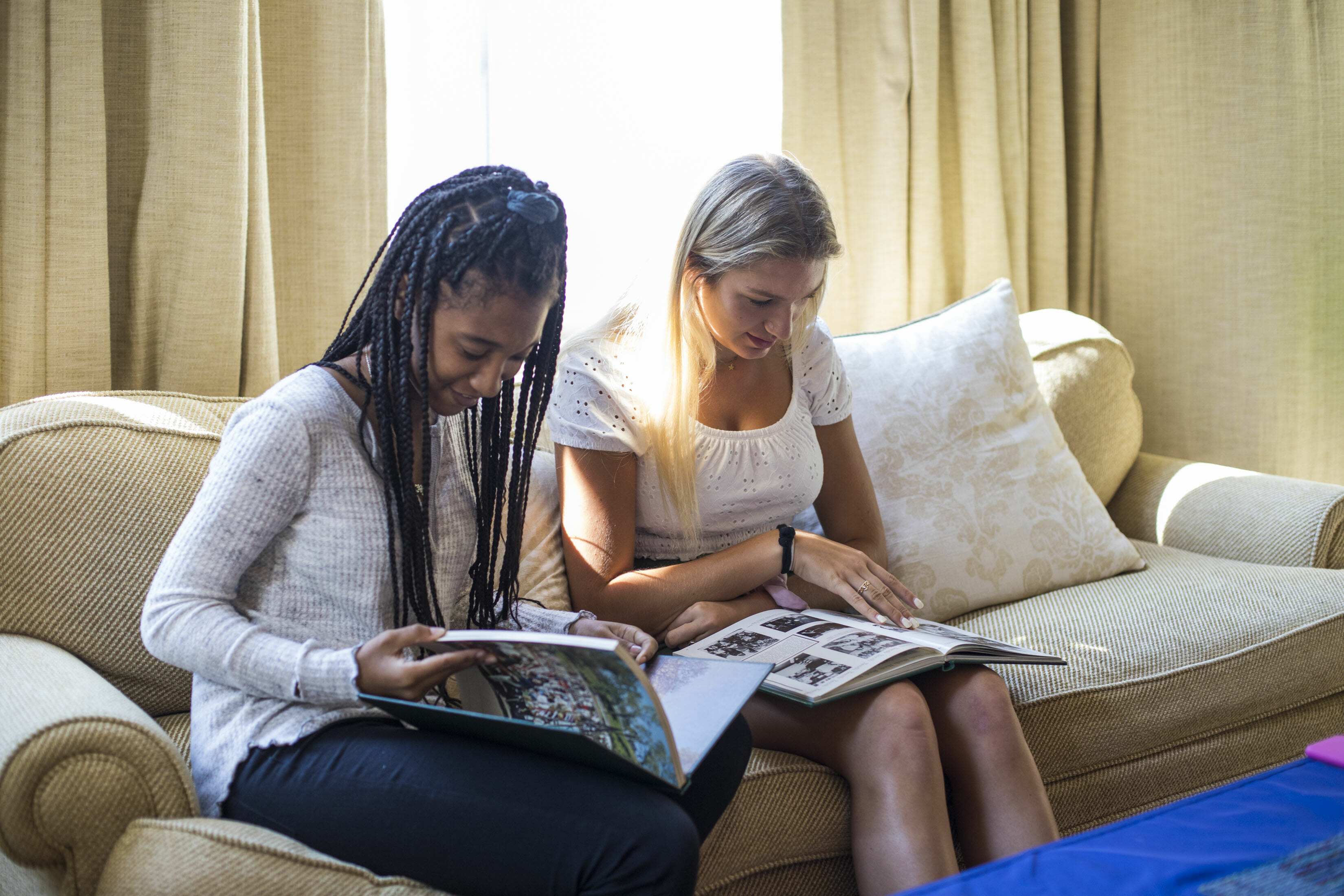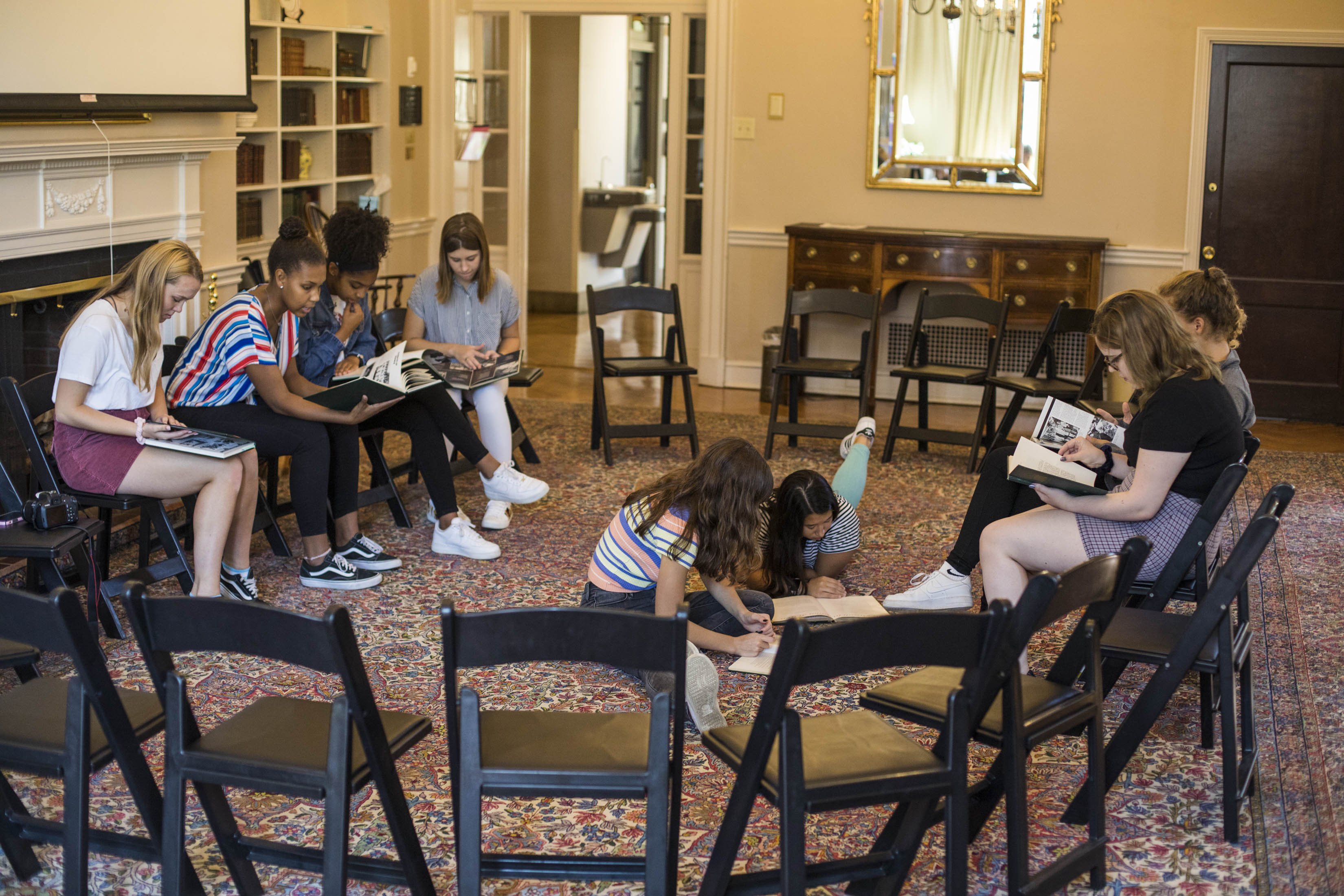Is it true that “Well-behaved women seldom make history”? What are “women’s rights” and “women’s issues”? To investigate these questions, students in the History of Women’s Rights in the United States course are exploring the history of American women’s rights and the confluence of those rights with other groups and topics in American history. The class began with understanding women’s place in the early United States and traces how women’s political, economic and social roles have changed over the centuries. Students explore the role of gender in shaping the United States and the way that gender ideologies – what it means to be a man or a woman – have evolved. Topics include the origins of the women’s rights movement, the fight for the right to vote, the diversity of women’s issues today including social status and body control, the rise of a mass feminism movement in the late 20th century and the intersection of women’s rights with other movements.
An early project for the class was to look through vintage Mary Institute yearbooks. Since Mary I was founded in 1859, there is a lot of history in those old yearbooks. The students gathered in the Alumnae Room in Danforth Hall, the original Mary Institute building, to look through the books. Their teacher, Dr. Tanya Roth, had gathered a variety of yearbooks from each generation, including years she knew had connections to the current class. Students located mothers, grandmothers and aunts. One student found pages with sheet music for “senior songs” and she and Dr. Roth took to the grand piano in the Alumnae Room to play the pieces.
It was a great moment of reflection as the students saw first hand how their school has grown through the decades and how the girls who came before them lived and learned in the same spaces.
Some of the students shared their thoughts about the exercise:
Haley Driver ’20
“While looking through the yearbooks, I was also excited to find my mother and grandmother within past yearbooks. I was very excited to see pictures of my family that I hadn’t seen before where they were in the same environment and the same place in their life as I am now. It was very fulfilling to see my family legacy imprinted in a book that will be in an archive forever and I felt a sense of pride from that. I felt very personally connected to looking through the yearbooks because this school has been a part of my mother’s family for a long time and I was very excited to see physical evidence of that.”
Annika Kline ’20
“As a new student, I am still developing connections to the school community and the yearbooks aided in my discovery of the school’s rich history and many traditions I will take part in this upcoming spring. The Mary Institute yearbooks presented a group of vivacious girls willing to take a stand for the things they believed in at the time. One of the things that stood out to me was the number of clubs where girls spoke out about political issues; environmental protection and women’s rights overall.”
Skyler Lesslie ’20
“After going through multiple yearbooks I began to notice patterns and trends. I could easily tell that these women were strong individuals. Reading through their superlatives and where they thought they would be in 20 years you could really get a sense of confidence and independence; something that isn’t always associated with women in the past. I really enjoyed looking through the sports sections and especially the field hockey records because I am on the MICDS team. Reading through the yearbooks was so much fun for me and it made me really wish I lived during that period.”
Jala Muhammad ’20
“I enjoyed seeing pictures of old teachers, coaches, and famous alums that experience Mary I and MICDS in those decades. Also, it was cool to find the parents of my fellow classmates and it was cool to find Sterling K. Brown. The yearbook deep dive did prompt a couple of questions. For starters, I wondered when did the first African American woman attend Mary Institute? How did the school participate in the current political climates? Also, I wondered if they experienced the same gender equality issues that we currently face, or were they different.”
Kelly Ross ’20
“Initially, I thought that the oldest yearbooks would be very traditional and proper. However, to my surprise, the girls seemed to have a lot of fun putting the yearbooks together and they were very funny and relatable. It really shocked me that a lot of the humor the girls used were things you still hear currently at MICDS and any other school. One example of this was how every senior had a funny picture and funny quote underneath it. One senior put a for sale sign in front of the school and wrote something like “You’ll thank me later.” That kind of exaggerated humor is something you would hear from me today, which is why it stood out to me when I saw it in such an old yearbook. This makes me wonder what other things are the same between past Mary Institute students and MICDS students today?”
Anna Speller ’20
“The thing that really stood out to me from the yearbooks were all of the similarities to stuff we still do today. Of course, there were differences too, but to see that there are so many traditions that we still continue to do today really blew my mind. For me, it was also so meaningful to see my own family members in those yearbooks and get a glimpse into their high school experience that will forever live on. It also blew my mind how the building where Mary I was (the Middle School now) looks exactly the same on the inside and outside. I never realized how many generations of women walked and learned in those hallways and it brings new meaning and appreciation for our school and how well they have continued to keep it through all of the years.”
Renee Stanec ’20
“Looking at the yearbooks, what stood out for me were the outfits of the sports teams, especially in the first half of the 1900s (particularly 1930s-1950s). It seemed crazy the way that they wore long, plaid dresses in a lot of sports like field hockey. This raised the question, when was it considered acceptable for women to play sports while not dressed typically feminine? When were they able to wear shorts and not dresses? Was it different for specific sports? How did women’s fashion in sports change as the attitudes towards women in sports? Expectations for women’s sports must have changed as society began to realize that female athletes have just as much potential as their male counterparts, but when and how did that happen?”










